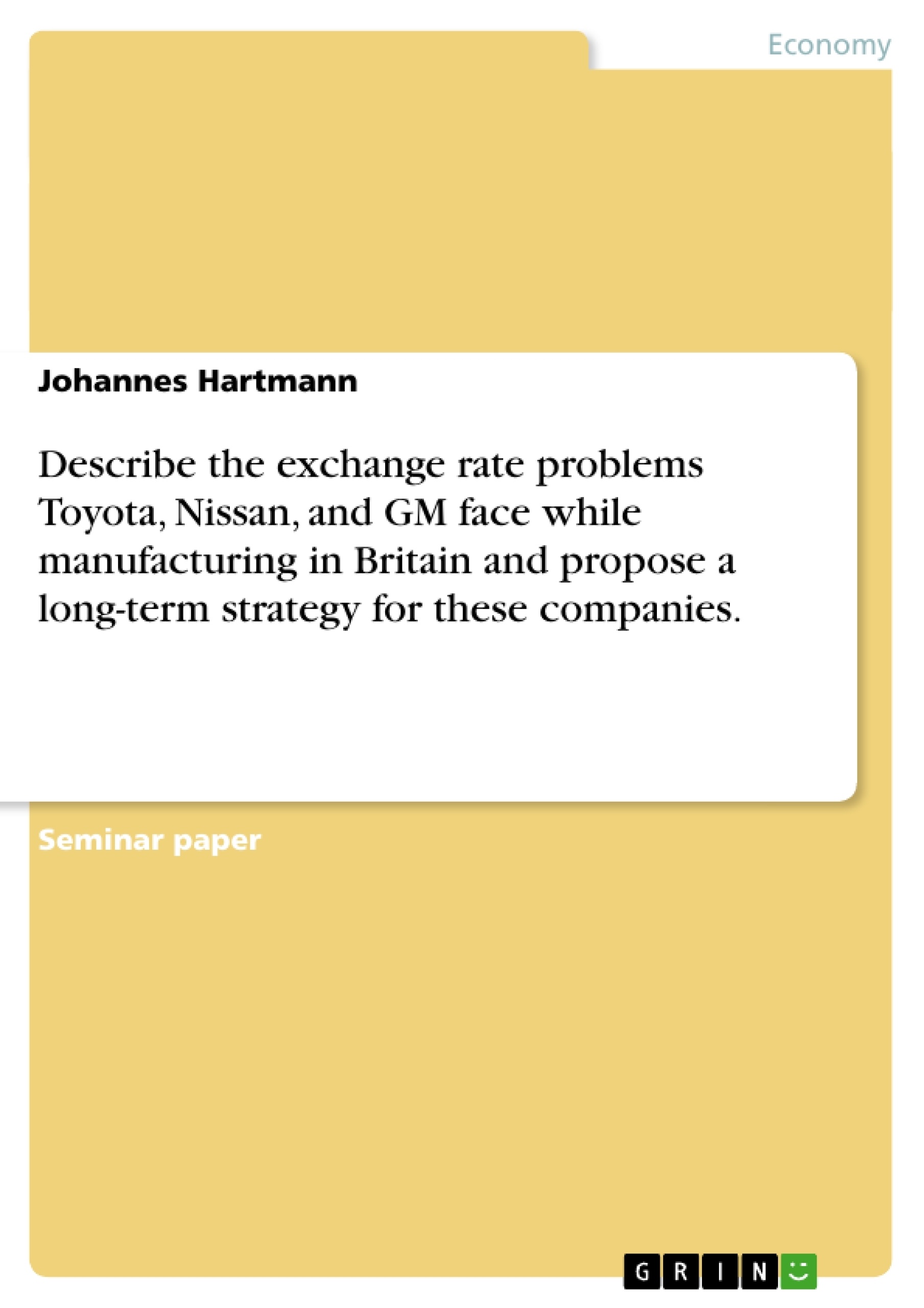Theories on exchange rate risks and the closely related theory of Purchasing
Power Parity (PPP) provide the basis for the analysis of the exchange rate
problems the three car producers face while manufacturing in the UK.
1.1 Theories on exchange rate risks
The exchange rate risk represents one of the most important risks for
companies operating in international industries.1 There are three kinds of
exchange risks: transaction risk, translation risk and economic risk. Transaction
exposure is the risk of changes in the value of currency occurring between the
time of the settlement of the transaction and the maturity of it.2 The second and
most important type of exchange risk is economic risk. Economic exposure
occurs when currencies, that are involved in the actual or potential competitive
situation, become over- or undervalued.3 It can heavily affect current and future
cash flows of domestic and foreign operations.4 The third type of risk is called
translation exposure. It refers to the risk that exchange rate fluctuations may
change the value of current assets and liabilities of the balance sheet of a
foreign affiliate in case of consolidation.5 [...]
1 See: Punett, Betty J. / Ricks, David A., 1994, p. 305
2 See: Grosse, Robert / Kujawa, Duane, 1992, p. 447
3 Over- and undervaluation are expressions that will be explained under the point 1.2 "Theory of
Purchasing Power Parity".
4 See: Czinkota, Michael R. / Ronkainen, Ilkka A. / Moffett Michael H., 1992, p.542
5 See: Grosse, Robert / Kujawa, Duane, 1992, p. 447
Inhaltsverzeichnis (Table of Contents)
- Theoretical background
- Theories on exchange rate risks
- Theory on Purchasing Power Parity
- Exchange rates UK versus Continental Europe
- Impact on carmakers
- Exchange rate between home- and foreign currency
- Exchange rate between Euro and Pound
- Long-term solution
Zielsetzung und Themenschwerpunkte (Objectives and Key Themes)
The main objective of this case study is to analyze the exchange rate challenges faced by Toyota, Nissan, and GM while manufacturing in Britain and to propose a long-term strategy to mitigate these risks.
- Exchange rate risk and its impact on international businesses
- Theories on Purchasing Power Parity (PPP) and their application to exchange rate analysis
- The impact of exchange rate fluctuations on car manufacturers operating in the UK
- Strategies for managing exchange rate risks in the long-term
- The importance of understanding the relationship between the Euro and the Pound Sterling
Zusammenfassung der Kapitel (Chapter Summaries)
The case study begins with a detailed examination of exchange rate risks and the theory of Purchasing Power Parity (PPP). It explores different types of exchange rate risks, including transaction risk, translation risk, and economic risk, highlighting their impact on international businesses.
The next chapter delves into the specific exchange rate issues faced by the three car manufacturers operating in the UK. It analyzes the relationship between the UK pound and other major currencies, specifically the Euro, and explores the implications for the profitability and competitiveness of these companies.
Schlüsselwörter (Keywords)
This case study focuses on the exchange rate risks faced by car manufacturers in the UK, specifically Toyota, Nissan, and GM. Key terms include exchange rate risk, Purchasing Power Parity (PPP), transaction risk, translation risk, economic risk, Euro, Pound Sterling, and the impact of exchange rate fluctuations on international business operations.
- Quote paper
- Johannes Hartmann (Author), 2002, Describe the exchange rate problems Toyota, Nissan, and GM face while manufacturing in Britain and propose a long-term strategy for these companies., Munich, GRIN Verlag, https://www.grin.com/document/19512




